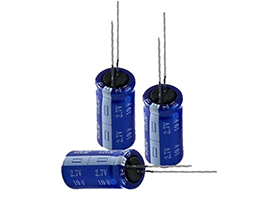Consulting phone:
135-3037-2041
(Mr.Wang)
We know that after the electrolytic capacitor is charged and discharged, its two leads are short-circuited for further discharge, and then its terminals are left open for a period of time, and a voltage will occur between the two terminals. This voltage is called regeneration voltage. The process is as follows :
When a voltage is applied to the medium, an induced electric field occurs inside the medium due to the transfer of electrons caused by the medium reaction, and its direction is opposite to the direction of the voltage on the surface of the medium. This phenomenon is called polarization reaction.

After the polarization reaction is caused by the applied voltage, if the two terminals are discharged until the voltage between the terminals is zero, and then left open for a period of time, a voltage will be generated on the two terminals, and thus a regeneration voltage will occur.
The regenerative voltage is placed in the open circuit of the capacitor for 10~20 minutes to reach the peak value, and then gradually decreases. The regeneration voltage tends to increase with the increase of the element.
If the regenerative voltage of the capacitor occurs, the sparks caused by short-circuiting the two terminals may cause fear of the workers on the installation line, and may also lead to the risk of damage to some low-voltage driving components (such as CPU, memory, etc.). The preventive measures are before use. Use a resistance of 100Ω to 1KΩ for discharge, or cover the terminal side with aluminum foil when the product is packaged to make the capacitor in a short-circuit discharge state.